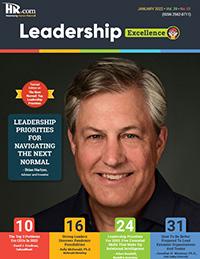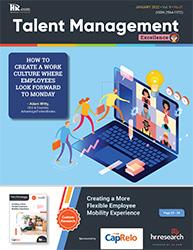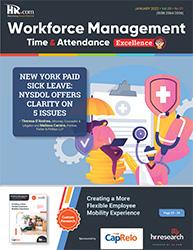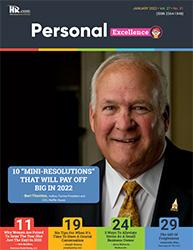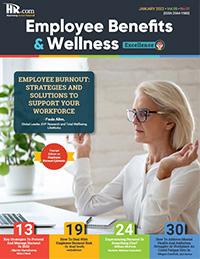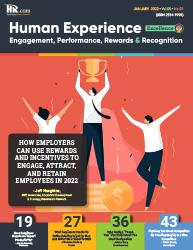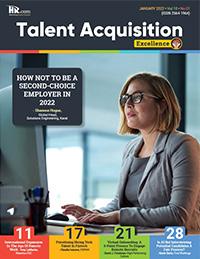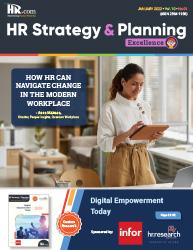



How I Fell Into
















Editor, Talent Acquisition Excellence

The world has undergone a drastic change over the past couple of years. A pandemic, fluctuating economy, and people’s changing priorities have paved the way for a volatile society like never before.
During the past year, over 11 million people quit their jobs. However, companies are finding it difficult to fill in open job positions. There is an acute shortage of talented people in the tech industry. Quiet Quitting and the Great Resignation have only made the matters worse.
Over the years, talent acquisition (TA) has grown to be a critical part of the human resources (HR) department, and today it plays a major role in the success of a company.
A wrong hire can cost a company several thousands of dollars, and replacing a bad hire can cost you about two to three times the employee’s salary. If you fail to hire people on time, that affects the productivity of a company, and ultimately its bottom line.
Deciding whom to hire is not an easy task. Ever wondered, who are these people who make the hiring decisions in a company? What makes a person a good talent acquisition specialist? What do they do and what are the capabilities a good TA specialist should have?
Featured in the November edition of Talent Acquisition Excellence are a few selected write-ups by TA and HR experts, who touch upon the questions mentioned above, and also about what is happening in the world of work.
Featured on the cover is How I Fell Into Recruiting, where Bluehouse Consulting Group’s Jennifer Allen Newton shares the stories of three talent acquisition professionals, who made the switch from completely different careers to TA.
In Exciting Opportunities In Talent Acquisition, isolved’s Dustin Stipanovich goes in-depth into the world of talent acquisition and explores what makes a person a good talent acquisition specialist.
Also, read Talent Shortage? Job Requirements Might Be To Blame, where Cengage Group’s Rya Conrad-Bradshaw lists down the 3 strategies companies can use to expand their talent pool.
Also, featured in this edition is an exclusive research report, Employee Identity Verification: From Nice-to-Have to Need-to-Have, that explores familiarity and satisfaction of HR with background screening and identity verification, personal and/or organizational encounters with identity fraud, the role of identity verification in background checks, factors influencing the use of identity checks, and more.
That is not all! Also, check out the other articles included this month. We hope this edition of Talent Acquisition will help you find excellence in your recruiting, hiring, and onboarding efforts.
Happy Reading!
In a world of unparalleled challenges (global pandemic, racial injustice, politi cal rivalry, digital 4.0, emotional malaise), uncertainty reigns. Finding opportu nity in this context requires harnessing uncertainty and harnessing starts with reliable, valid, timely, and useful information. The Excellence publications are a superb source of such information. The authors provide insights with impact that will guide thought and action.
Rensis Likert Professor, Ross School of Business, University of Michigan Partner, The RBL Group
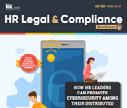

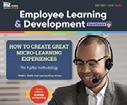

Excellence publications are my ‘go-to’ resource for contemporary and action able information to improve leadership, engagement, results, and retention. Each edition offers rich and diverse perspectives for improving the employee experience and the workplace in general.
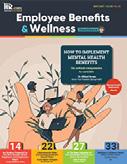
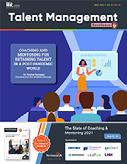
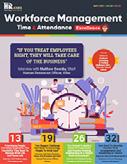
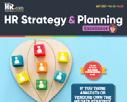
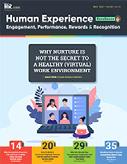

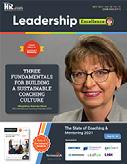
Author, Virtual /Live Keynote Presenter, Inc.’s Top 100 Leadership Speakers

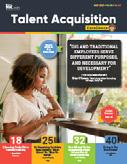
I regularly read and contribute to Leadership Excellence and Talent Manage ment Excellence. I use many of the articles I read to augment my own presen tations and I often share the articles with my clients. They are always quick, right on target for the latest issues in my field, and appreciated by my clients.

If you want to stay up to date on the latest HR trends, choose a few of the different issues from the Excellence series of publications.
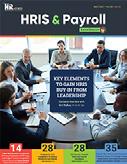
 Dr. Beverly Kaye CEO, BevKaye&Co.
Dr. Beverly Kaye CEO, BevKaye&Co.

This monthly interactive learning experience captures key metrics, actionable items and keeps you focused on developing yourself and corporation as top leaders in the Talent Acquisition space.

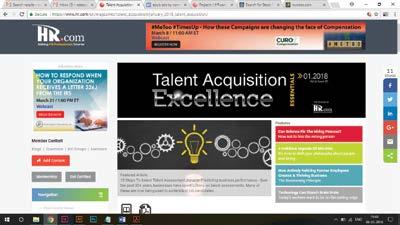
Talent Acquisition Virtual Events offer webcasts and demos on topics in any of the staffing related programs: Contract Workforce and Talent Exchanges, Online Staffing and Sourcing, Recruitment Process Outsourcing, or Quality of Hire. Learn how to bring the right staffing and recruiting programs into your organization and make them impactful. Listen to the world’s top thought leaders in the staffing industry as they help companies make decisions in all areas of staffing and recruiting. Each Virtual Event consists of up to 10 credit webcasts.
HR.com webcasts deliver the latest Talent Acquisition industry news, research trends, best practices and case studies directly to your desktop. Webcasts are available live online with a downloadable podcast and a copy of the slides (PDF) available before and after each webcast. Earn all of the required recertification credits for aPHR, PHR, SPHR, GPHR, and SHRM Certifications. HR.com’s one-hour webcasts, in every HR specialty including Talent Acquisition, are pre-approved for HRCI and SHRM credit (excluding Demo webcasts).
Join almost 55,000 HR.com members with a similar interest and focus on staffing and recruiting topics with one of the four staffing related online communities: Contract Workforce and Talent Exchanges, Online Staffing and Sourcing, Recruitment Process Outsourcing, or Quality of Hire. Share content and download research reports, blogs, and articles, network, and “follow” peers and have them “follow” you in a social network platform to communicate regularly and stay on top of the latest updates. This well established Community is an invaluable resource for any HR professional or manager.
Iam not a recruiter, but I have had the good fortune to work with a few talent acquisition professionals over the years. As they shared with me their personal career stories, it struck me how common it is for recruiters to come into the profession as a 2nd or 3rd career. Many of them came from areas of business that are totally outside the human resources function – like marketing, sales or accounting – and were drawn to recruiting through serendipity or by seeking to expand their own careers in new and interesting ways.
I wondered, why so many successful recruiters come from completely different career areas. Is there something about having work experiences in other domains that helps people become top recruiters? And what transferrable skills did they bring to the job that have helped them be so successful?
I sat down with three top talent acquisition professionals who made the switch from completely different careers to ask:
1. How did you fall into recruiting?
2. What capabilities are most important for someone considering a career in talent acquisition?
3. Do you have any more advice for would-be recruiters?
I spoke with:
Rachelle Snook, Global Talent Director for WD-40 Company, Brenan German, Founder and President of Bright Talent, and Paul Gonzales Director of Talent Acquisition for Orora
This is the first part of the series, where we would discuss: How did you fall into recruiting?
Paul Gonzales: I have hired dozens of recruiters over the years, and this is one of my favorite questions to ask people when I am interviewing for recruiting positions because almost everybody fell into recruiting somehow. When have you ever heard a child say, “When I grow up I wanna be a recruiter!”?
I started my career right out of high school working at UPS. While I was going to Pasadena City College I was loading up brown trucks at 3:00 am. After a couple of years there, at age 19 1/2, they tapped me for a supervisor role, which I did for about 5 years. Gradually, over time, I moved up the ladder in operations.
One of my mentors took a job in what was then called “personnel” (today it would be human resources). One day he approached me and said, “UPS is opening up a recruiter position and I’d like you to apply for it.” And that’s how it started for me.
Jennifer Allen Newton, Bluehouse Consulting Group, Inc.3 talent acquisition leaders, who came from other fields, share how they became recruiters - Part I
Of course, I had no idea about recruiting or what the job would entail. He explained to me how I would be working to hire employees for the company, I would be interacting with lots of different people at career fairs, going to colleges and community organizations, etc. I asked, “Why me?” He said, “Because you’re a people person.”
I told him I would think about it. It did sound like something I might be good at, so I applied, got the position and thus began my 30-year career in recruiting. I started out hiring for three large UPS facilities in the metro Los Angeles area.


After about three or four months on the job, I knew recruiting was a career I would be in for the rest of my life. I love meeting people and I love the interactions. And I love connecting people to the organization – the success of being able to fill positions that support the company while at the same time helping someone get a job. Seeing that person succeed and being happy they got a job, is very fulfilling.
Rachelle Snook: I graduated from college with an accounting degree. I worked in a corporate accounting job for about six months and realized that job was not for me, so I took a job in a family-owned business doing their accounting and bookkeeping. They were operating two different businesses – the husband owned a bunch of coffee retail shops and the wife ran a fashion agency. I ended up not only doing all their books, but also their payroll, and then eventually I got involved in hiring people as well.
At one point they had a big fashion show coming up and needed to hire catwalk fashion models. The owners were too busy and did not have time to do it, so they asked me if I could take on the task of recruiting models. It was a completely new area to me, but by that point, I understood the business well. I worked with the fashion designers to understand the profile of the ideal model for their couture, such as specific physical attributes, height and build, and so on. With little direction from the owner, I recruited college friends, used modeling agencies, called
models we had previously worked with, and asked the designers if they had any recommendations.
Recruiting, as it turned out, was a job I enjoyed because it tapped into my natural sense of curiosity and problem-solving – identifying what is needed in a given situation, and then finding solutions. And that is a combination of skills I think a lot of recruiters have in common.
When I moved from Australia to the U.S., I ended up working as a researcher in a retained executive search life science firm. Those were the days before LinkedIn, so we had to be resourceful in figuring out ways to find the right people for jobs. For example, I was sourcing for a regulatory VP for a biotech company, so first I needed to find out everything that specific job entailed, as well as the unique requirements for the hiring company, and the size and depth of the talent pool, before I could even start looking for potential candidates and requesting referrals.
From that job I moved to a contingency staffing agency specializing in HR and, eventually, I moved into corporate recruiting. The discipline and skills I developed in retained and contingency staffing have proven to be invaluable in my in-house company talent acquisition roles.
Brenan German: I was a distracted student until I entered junior college. It was there I found my love for reading and writing, and I had an influential English teacher, who encouraged me to study English and creative writing at university. I was not sure how that would translate into a career, however. At the time I thought I might become a professor and poet. I applied to a few MFA programs, but in the meantime, I met my future wife Lori and, by luck, landed a job with The Gallup Organization.
I saw a job posting on the bulletin board in the university career center for a project manager with The Gallup Organization and applied, despite having no skills or experience in project management. The interviewers at Gallup recognized some potential in me and hired me to work in their small field office
in Irvine, California. As it happens, Gallup is the organization that developed Strengths Finder and was pivotal in the development of behavioral interviewing techniques to identify what behavioral competencies are needed for a specific job. That certainly worked out well for me!
I was working as a project manager between Gallup’s field office analysts and the operations team in Lincoln, Nebraska which was conducting employee/ patient surveys for healthcare systems. When Gallup decided to open an interviewing center on the West Coast, they assigned me the job of researching how many college students were within a 20-mile radius of Irvine. (Polling work is a great pay-for-performance, part-time job for students)
There are a lot of colleges and universities near Irvine, so that location was eventually chosen for the West Coast interviewing center, and it was then Gallup tapped me to become a recruiter. I initially said no because I had no experience in recruiting. But, again, the Gallup team knew my competencies and strengths better than I did. They saw that I was good at engaging people, and convinced me that I was a great fit for the role.
My training was all on the job. They taught me the skills I needed for behavioral interviewing, and once
I started, I discovered I really thrived in recruiting. I enjoyed the work because I was getting paid to do something that came naturally to me, and I loved learning all the methodologies of recruiting.
I was with Gallup for about four years, and from there I rose through the ranks in several different companies – from an IT staffing company to corporate talent acquisition and, eventually, into overall HR leadership positions.

A layoff inspired me to use my skills for building and operationalizing HR programs to start my own consulting business.

In the second part, we will explore what capabilities are most important for someone considering a career in talent acquisition, and in Part III, we will share the advice these recruiters have for would-be recruiters.
Would you like to comment?
Jennifer Allen Newton, President of Bluehouse Consulting Group, Inc., is a coach, consultant and writer for individuals and companies in a variety of industries.
labor markets we have ever seen in a long time. Candidates are demanding more from prospective employers than ever before, and companies have to adjust to this new reality to remain competitive.
among job seekers have shifted dramatically over the past several years. The Covid-19 pandemic, the transition to remote work, and a profusion
of economic crises (particularly soaring inflation) have led millions of workers to reassess what they want out of their jobs. This has resulted in one of the tightest
While job seekers have plenty of justified grievances about the hiring process, employers have legitimate complaints as well – such as candidates dropping out for no reason, failing to show up for interviews, or even disappearing on their first day of work. Candidates and employers deserve to have their time and efforts respected. When your company provides a streamlined and responsive hiring experience, it will not just improve your brand and attract more talent – it will also encourage employees to bring their best to the process.
Candidates are so used to poor hiring experiences that even modest efforts (like thoughtful auto-messages) will set your company apart. However, as our recent Candidate Experience Report demonstrates, there are many ways for hiring managers and HR teams to make your hiring process exceptional.
When job seekers invest time and energy into your hiring process, they deserve an experience that will make them feel like this investment was worthwhile.
One of the biggest annoyances for job seekers is a recruiting process that seems unnecessarily timeconsuming. Our research found that almost a third of candidates will abandon the hiring process if they feel it is taking too long – a proportion almost as high as the number of candidates, who will drop out due to a lack of remote or flexible work options, better job offers, or negative reviews about a company’s culture.
HR teams can hasten the hiring process with objective and predictive hiring tools, such as pre-employment assessments. Instead of forcing candidates to go through round after round of unstructured interviews (which are notoriously ineffective at predicting job performance), hiring managers can make informed decisions about prospective employees with rigorous assessments that are designed to measure a set of concrete,
predetermined performance metrics. This will not just improve time-to-hire and the candidate experience – it will also make your hiring process fairer and more predictive.
Pre-employment assessments are not just the most reliable way to recruit qualified candidates – they are also a way to inspire confidence in your hiring process. Ninety-four percent of the nearly 2,000 candidates we surveyed say assessments demonstrate their potential “very well” (52 percent) or “somewhat well” (42 percent).
These are just a few of the reasons that old, slow hiring methods are on their way out.
A central theme of our report is candidate confidence. Beyond the fact that candidates clearly see the value in pre-employment assessments, almost three-quarters say these assessments can demonstrate their potential beyond their experience, 84 percent believe they are capable of showcasing their full potential to employers, and just 10 percent feel that the hiring process is unfair.
Meanwhile, 87 percent of candidates are confident they will find a satisfying new job (over two-thirds are very confident) and 79 percent are confident they will be paid enough.
Considering these numbers, it is no surprise that candidates
want feedback from potential employers: 91 percent say they prefer to receive feedback on their pre-employment assessments (this is a strong preference for 77 percent of respondents). Feedback gives candidates a reward for taking the time to complete an assessment, and it can keep them engaged early in the process when they are less likely to be invested.
Today’s job seekers appear to be genuinely interested in improving their performance, and companies that give them honest and immediate feedback will be more attractive than those that just cycle through candidates with minimal engagement.
Just as candidates want to know how they performed on pre-employment assessments, they also want companies to be upfront with them about other relevant issues. The secondmost-cited reason candidates quit the hiring process is “poor communication from the employer/recruiter” – just behind “salary didn’t meet expectations.”
Speaking of compensation, 82 percent of candidates say they prefer job descriptions that list salary information. Doing so will not just demonstrate your commitment to transparency – it will also make your hiring process quicker by filtering out candidates whose expectations are not aligned with yours.
Candidates should also know what to expect with regard to other critical issues, such as their options for flexible work – the top priority among our respondents. Hiring managers should provide as much information as possible about candidates’ major concerns, such as what they can expect to be paid, which flexible work options are available, and what the company culture is like.
Transparency about these issues will not just make your hiring process more efficient – it will also establish a basis for discussion and negotiation right at the start, which will generate
trust and help you reach mutually beneficial compromises with promising candidates.

In today’s extremely competitive labor market, your employer brand matters more than ever. Show the candidates you value their time by providing ample information right at the outset and using objective and efficient tools, like pre-employment assessments. If candidates want feedback, figure out how to give it to them.
If they respond well to gamified hiring methods, work them into your process. These are the ways you can earn a reputation as an




employer of choice, which will help you win top-tier talent over your competitors.










 By Dustin Stipanovich, isolved
By Dustin Stipanovich, isolved
New to the HR field and thinking about talent acquisition? Let us begin with exactly how talent acquisition differs from recruiting.
Thinking of HR’s role in bringing new people into the organization as a telescope, recruiting is zeroed in on filling the role at hand. When there is a role that needs to be filled, a recruiter will field the proper person and do what it takes to fill the role.
In comparison, talent acquisition has its figurative finger on the pulse of the organization. They are more strategic in finding not just a person to fill the role, but a strategy to find the right leaders and executives to lead the organization. And they are thinking bigger. They are anticipating where there may be employee turnover, collaborating with leaders and managers to learn where there needs to be more support, and establishing when that will happen.
What kind of person makes a good talent acquisition specialist? First and foremost, the ability to listen and learn. Recalling that talent acquisition is a bigger picture than just filling an immediate role, it will take some work to learn the organization and to see its bigger vision. The second is relationship-building skills.
A great talent acquisition specialist gets to know people within the organization and even outside. Being active in the field and canvassing places, like
LinkedIn, where they can familiarize with people in the industry they are working in and network for when positions open up.
However, traditional HR skills can not be forgotten. Excellent analytical skills, people skills like empathy and social skills are invaluable. Honing the best communication skills to be able to read between the lines, infer what people are not saying and see beyond the words are vital to this type of people-centric role.
Forty-seven percent of employees who applied for a new job in 2021 rated the applicant experience as poor, with 20 percent saying that they did not hear back from the employer. Great communication matters. Potential employees, even ones who are not chosen, may be current or potential customers. Word of mouth via social media is very real and should always be assumed.
A company’s reputation toward potential employees speaks volumes about the perceived treatment of current employees. A positive interaction with HR representatives should be of the utmost importance. HR is the face of the company.

It is fair to think of a role as a talent acquisition specialist as a growth move in the career of an HR representative or generalist. The skills needed come from years of hands-on learning that can not be duplicated in a class, a book, or an online course.
Years of working in the field contribute to growth in social and relational skills and they must be cultivated organically. More formal education never hurts and pursuing a master’s degree in human resources or human resource management is absolutely beneficial, but it is not the sole contributor to stepping into a role in talent acquisition.
Major organizations are seeing the benefit of moving from a reactive recruiter to hiring and making use of talent acquisition specialists. Shifting HR teams into more strategic business decision-makers is a trend that many companies are jumping on. After all, having a strategic plan benefits not only the company, but also managers, employees and potential employees.
Companies are often on the edge of HR technology with people analytics. These new technologies allow HR to anticipate where spots will potentially open up, where there is churn and other sourcing information from data that the company already uses. Machine

learning is able to take the data and turn it into very usable and easily digestible graphs and charts that business leaders use to make savvy talent decisions. A talent acquisition specialist is just the person to put this into motion.
However, do not feel like looking outside the organization is the only way to become a talent acquisition specialist. Knowing a company and contacts within is an invaluable asset that can help make the move into a talent acquisition role when it opens. Even without the title, having talent acquisition responsibilities usually comes with a promotion and pay increase.
Speaking up when a process is not working and giving managers feedback based on expertise moves the organization forward as a whole. Getting involved and having a true stake in the business shows initiative for more responsibility.
Would you like to comment?
 By SeekOut
By SeekOut

Building a company of diverse employees has become a top priority for talent acquisition professionals. And it makes perfect sense. A diverse workforce leads to better decision-making, happier employees, and significant business gains.
However, there is plenty of data that shows there is progress to be made in improving diversity and inclusion in the workplace. In this article, we will share eight diversity hiring statistics every talent leader needs to know.
Having a diverse leadership team is not just a noble thing to do. Diverse managers and executives bring unique perspectives to the company, resulting in new ideas, greater innovation, and better business outcomes.
A study from Boston Consulting Group found that companies with above-average diversity on their leadership team generated 19% more revenue due to innovation than companies with below-average leadership diversity. (Source: Boston Consulting Group)
Prior to the Covid-19 pandemic, women and men tended to leave their companies at similar rates. However, the challenges of the pandemic have significantly impacted working mothers, resulting in nearly two million women considering leaving the workforce, according to McKinsey’s Women in the Workplace 2020 Report.
Women’s exodus from the workforce will have major consequences for their companies’ financial success and diversity hiring. McKinsey reports that companies with well-represented female leadership can have close to 50% higher profits than companies that lack female leadership. Additionally, more than 50% of women in senior-leader roles advocate for gender and racial diversity in their workplace. (Source: McKinsey’s Women in the Workplace 2020 Report)
Many companies promote their diversity and inclusion efforts as part of their recruiting strategy. Today’s job seekers value diversity when considering an opportunity, but want to hear about employees’ first-hand experiences in the workplace.
Glassdoor’s D&I Workplace Survey revealed that 66% of job seekers trust employees the most when it comes to understanding the state of diversity and inclusion at a company; significantly higher than the trust they put in senior leaders (19%), the company’s website (9%), and recruiters (6%). (Source: Glassdoor’s D&I Workplace Survey)
Due to the high demand and specialized skills required, STEM jobs offer high compensation.
According to Pew Research Group, the median annual earnings for a STEM professional is $77,400 compared to $46,900 for those who work in non-STEM jobs.
However, the same study found that Hispanics hold only 8% of STEM jobs in the U.S., despite making up 17% of the workforce. Black/African Americans hold only 9% of STEM jobs while making up 11% of the workforce. Whites comprise 67% of STEM jobs but account for 63% of the workforce. (Source: Pew Research Group)
One of the biggest challenges Asian Americans face is having the opportunity to climb the ranks in their company. IBM VP and CTO Radha Ratnaparkhi says, “Asians suffer on the sponsorship front—often dismissed as brilliant technologists but not considered capable of having an executive presence to champion key initiatives.”
A McKinsey report found there are 64% fewer Asian American men and 39% fewer Asian American women in senior roles compared to entry-level positions. According to an IBM study, Asian Americans account for 4.4% of Fortune 1000 board seats and only 1.47% of those seats are held by Asian American women. (Source: McKinsey and IBM)
The U.S. Supreme Court ruled in June 2020 that LGBTQ+ people are protected from workplace discrimination under the 1964 Civil Rights Act. Despite the landmark ruling and efforts from many companies to encourage employees to be their authentic selves at work, many LGBTQ+ professionals say their workplace is not inclusive.
The National Human Rights Campaign Foundation reports that 51% of LGBTQ+ employees hide their sexual and/or gender identity at work. Fifty eight percent say they have heard jokes or derogatory comments about LGBTQ+ people, but only 5% reported those issues to human resources. (Source: National Human Rights Campaign Foundation)

It has long been known that resume details (first name, last name, and photos) lead to unconscious bias that influences how recruiters and hiring managers assess candidates. A recent study validates this claim—finding that job seekers with distinctively Black names are less likely to be contacted after applying.
Researchers from the University of California, Berkeley and the University of Chicago sent 83,000 fake applications to 108 of the largest employers in the U.S. They discovered that distinctively Black names reduced the probability of employer contact by 2.1 percentage compared to distinctively White names. They also found that the lack of contact was concentrated in 23 specific companies. (Source: The National Bureau of Economic Research)
Military service provides veterans with unique training and experience. According to a Pew Research Survey, more than half of veterans say their service taught them skills that prepared them for jobs outside the military.
However, many veterans do not get the opportunity to fully apply their skills in their post-service careers. A joint study from the Call of Duty Endowment and ZipRecruiter found that 31.8% of veteran professionals are “underemployed,” meaning they settle for jobs where “employment is at a skill level below what the job seekers were objectively qualified for”. (Source: Pew Research and Call of Duty Endowment and ZipRecruiter
Most talent acquisition professionals understand candidates want to work for a company that is welcoming to people from all backgrounds. In fact, 3 in 4 job seekers say they value workplace diversity when considering an opportunity, according to the Glassdoor Survey referenced earlier in this article.
The challenge many companies face is translating diversity hiring intentions into actions and results. SeekOut’s data-driven diversity recruiting
approach helps recruiters eliminate unconscious bias and quickly source qualified female, Hispanic/Latinx, Black/African American, Asian, Native Hawaiian, LGBTQ+, and veteran candidates.
SeekOut is rated the #1 Diversity Hiring Software by G2. SeekOut’s Diversity Talent Analytics helps recruiters set realistic diversity targets, drive hiring manager conversations for diversity-friendly job descriptions and hone their diversity sourcing strategy. Learn how your company can create a data-driven diversity hiring strategy using SeekOut and easily build a diverse workforce.
A diversity hiring strategy is the foundation of DEI—but there is more to truly being a diverse and inclusive company. After all, if the number of diverse employees exiting your organization outpace the number you bring in, your hiring efforts are meaningless.
The statistics outlined in this article show there are advantages to workplace diversity, as well as deep-seated issues that prevent people from underrepresented groups from having the same career opportunities as everyone else. At SeekOut, we say diversity cannot work without inclusion, and diversity and inclusion cannot be sustained without belonging. Hire diverse employees and ensure they are treated fairly, heard, appreciated, and made to feel like they belong.
If you’re trying to improve diversity recruiting, tap into tech talent for digital transformation, or become a talent advisor, we should connect. Request a demo today and learn why SeekOut is rated the #1 Diversity Hiring Software by G2.
Would you like to comment?
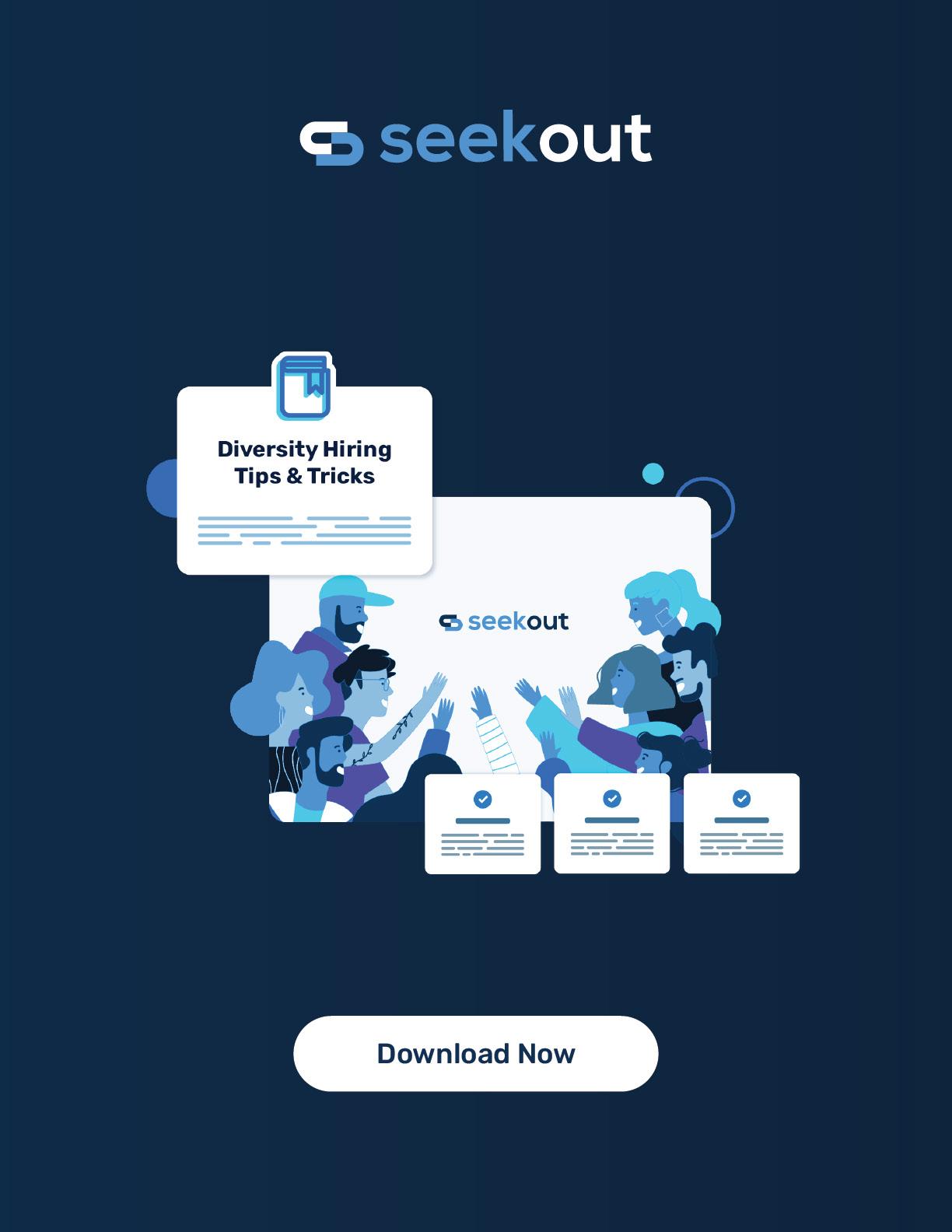
and HR departments across the country are feeling the heat. Their employees keep leaving (resignations are 20% higher than they were pre-pandemic) and they can not seem to refill positions fast enough. With over 10 million job openings to roughly 6 million unemployed Americans, why are employers having such a difficult time filling vacancies?
Employers themselves may be partially to blame for today’s employment gaps. Job seekers have access to millions of postings and company reviews at the push of a button, and in today’s market, they have become more selective than ever. As a result, companies that have not modernized hiring practices and lack a commitment to employee development will struggle to both attract and retain talent.
In its annual Employability Report, Cengage Group looked into the labor shortage and the steps employers can take to revive their workforce.
To broaden their talent pool and better retain staff, employers should rethink job requirements for entry-level roles, prioritize internal professional development initiatives, and invest in external training that demonstrates commitment to their employees.
Even before heightening inflation, the price of college had become simply too high for many Americans—and
about 40%, who did attend, were not able to complete their program within 6 years of starting, making it difficult to recoup their investment.
Not surprisingly, higher education enrollment fell 3.6% from Spring 2020 to 2021, then by another 4.5% in Spring 2022 – yielding a total decline of 7.4%, or roughly 1.3 million students since the pandemic hit.
Despite fewer students choosing a four-year college and the fact that less than half of the working age adults currently have a degree, our survey found that 62% of employers still require a degree for entry-level jobs, and more than a quarter do so to trim their applicant pool or because “that’s the way it’s always been done.” That proportion is even higher for jobs with family-sustaining wages—up to 79%
While many issues are contributing to the current talent crunch, there is a clear disconnect when it comes to hiring practices and the available talent pool. Though degrees have previously been the key determinant of employability, too many potential students have been gated from having access to traditional higher education, and today’s workers have new options to gain job skills and experience.
Furthermore, they have always been used as a signal, instead of a real indication of underlying skill. With a rising number of students pursuing alternative education paths, such as online skills training and stackable credentials programs, employers too need to adapt to evaluate these new credentials and determine what skills really qualify a candidate for a job—and how to equitably evaluate them.
Adopting a skills-centric approach to hiring, especially when it comes to entry-level roles is one solution. Employers can tailor job posts to emphasize the core skills and competencies needed to be effective in the role (including a candidate’s willingness to learn and grow) to feel comfortable moving away from broad degree requirements.
In doing so, they can immediately broaden and diversify their applicant pool. Research from Opportunity@Work has shown that adding a four-year degree requirement automatically screens out 76%
of African Americans, 81% of Americans in rural communities, and 83% of Latinx workers.
Employees have come to expect a lot from employers, including at times taking on the role of an educator. Employees often prioritize learning and career development prospects over other factors when it comes to finding the right job – and not having those opportunities for development can also be why they ultimately resign.
Our recent Great Resigners report, which surveyed U.S. workers, who had either recently left their job or were seriously considering resigning, found that 83% were looking for a new job because they no longer felt like they were growing in their position. For these employees, education could be the answer to finding the growth they seek.
As the skills gap impacts applicants and hiring managers alike, professional development is paramount in finding and keeping employees. With more than a third of employers in our survey reporting difficulties finding candidates because they do not understand which credentials are valuable for roles, employers need to place emphasis on ramping up their internal training to provide workers with the necessary skills.
To help bridge the gap, hiring managers should instead focus on the raw skills an applicant possesses and build the capabilities within their organization and through trusted partners to provide the necessary training to prepare and groom the candidate into a successful employee.
Internal training programs not only help with upskilling, but also support HR teams with both recruiting and employee engagement. By highlighting employee education benefits, mentorship and workshops in job descriptions, companies can stand out in a job search and attract talent. Then, through a continued commitment to internal training and mentorship, companies can keep staff feeling fulfilled and retain that talent.

In our study, 77% of employers said offering free, employer-sponsored education as part of their benefits package was a differentiator in recruitment and retention. As technology forces jobs to change more rapidly, the demand for new skills also increases – and sometimes more quickly than schools can teach them, or students can go back to learn them.
Employees need to support both just-in-time learning, so employees can develop new skills, as well as longer-term formal upskilling opportunities, so they can continue to grow and move up within the organization. With quality online education at all levels expanding exponentially, today’s employees can more easily take advantage of these benefits.
However, while many employers see the benefit of employee education programs, almost half (46%) expressed an unwillingness to sponsor external education for their workforce, placing the onus on the employee to acquire the credentials and skills necessary to advance their own careers (something not economically feasible for many talented workers).
This is particularly detrimental to attracting talent, considering the current economic strain facing many Americans. And, with millions of vacancies across America, job seekers are likely to choose an employer that will sponsor their upskilling.
Today’s job seekers are more selective than ever, and with almost two openings for every candidate in America, they can afford to be. Employers must adapt to survive and thrive amidst the “Great Resignation” and “Quiet Quitting” phenomena. Talent is out there, but in an employees’ market, employers need to adjust their approach. By modernizing hiring practices, and investing in employee growth, employers can start to combat the skills shortage and get America back to work.
Rya Conrad-Bradshaw is VP, Corporate Markets, at Cengage Work, part of Cengage Group. She has spent the last 10+ years at the intersection of education and employment, working with Fortune 500 companies across sectors to create innovative talent solutions. She has expertise in solving skills gaps, creating greater equity through talent solutions, and working through the complex workforce system to create lasting, scaled efforts.
Would you like to comment?


Employee Identity Verification: From Nice-to-Have to Need-to-Have Exclusive Study By The HR Research Institute
Survey conducted by: Sponsored by:
 By Taylor Liggett, General Manager, Sterling
By Taylor Liggett, General Manager, Sterling
The HR Research Institute, powered by HR.com, the world’s largest social network for Human Resources professionals, is a key part of our mandate to inform and educate today’s HR professionals. Over the past three years, the HR Research Institute has produced more than 85 exclusive primary research and state of the industry reports, along with corresponding infographics in many cases, based on the surveys of thousands of HR professionals. Each research report highlights current HR trends, benchmarks, and industry best practices. HR Research Institute Reports and Infographics are available online, and always free, at www.hr.com/featuredresearch

Sponsored by:
Every new hire has the potential to have a powerful impact on an organization. While you would hope to have the confidence to take the next step with your chosen candidates and to celebrate your new hires, candidate identity fraud is a very real and serious issue across many different types of organizations and hiring situations.
The Internet has made identity fraud easier due to the anonymity afforded in online interactions, and this can lead to dangerous consequences. With the rise in remote workforces, more personal information available online for misuse, and bad actors getting creative, organizations must ensure they are equipped to handle remote hiring and implement proper and robust identity verification processes to assess the authenticity of their candidates.
positions. Knowing this, what are the steps you can take to guard against this to protect your customers, employees, business, and brand?
There is now an imperative to verify a candidate’s identity and to do so early in the hiring process to prevent such fraud. This can potentially save organizations from huge financial, legal and security risks, while simultaneously creating a safe workplace.
Unfortunately, some people misuse technology to pose as someone else while applying for remote
HR.Com HR Research Institute recently undertook a survey, “Identity Verification Survey”, to explore familiarity and satisfaction with background screening and identity verification, personal and/ or organizational encounters with identity fraud, role of identity verification in background checks, factors influencing the use of identity checks, use of technology for identity verification, and more.
Why identity verification is critical for your hiring and organizational culture
The following are the major findings from the study.
Finding: More than half of respondents experienced identity fraud in some way
Nearly half (49%) of respondents have either personally been a victim of identity fraud or know a
friend or family member who has. A further 15% say that their organization has experienced at least one incident of candidate identity fraud. This means 64% of respondents experienced or heard about identity fraud either personally or professionally.
Survey Question: You noted your organization has experienced at least one incident of candidate identity fraud. Which of the following has occurred? (select all that apply)
An employee was discovered to have lied about their identity
An incomplete background check was conducted due to incorrect candidate data
The person who showed up for the job was not the person whose background was checked
The person who showed up for the job was not the person who was interviewed
The person who showed up for the job was not the person who took the pre-employment assessment
candidate identity fraud involved an incomplete background check due to incorrect candidate data
Finding: The majority say their organization’s candidate identity fraud incident involved an employee lying about their identity
Of those who said their organization has experienced candidate identity fraud, 60% say that it entailed an employee lying about their identity. Forty percent say that an incomplete background check was conducted due to incorrect candidate data.
Nearly a quarter (23%) say the person who showed up for the job was not the person whose background was checked, 20% say the person was not who was interviewed, and 17% said the person was not who took the pre-employment test.
This indicates that organizations should collect the right candidate information before going into the
background check process. If not, they should at least ensure identity verification is done before the employee’s first day.
Finding: Seventy-one percent say they would likely use digital identity verification if it were priced competitively
The majority would be somewhat or very likely to use digital identity verification if it were priced competitively. Cost is the top factor taken into consideration when deciding whether or not to add an identity check prior to a background check. The good news is, digital identity verification solutions are very competitively priced as more options have come to market.

We also view digital identity verification as a better alternative to verifying paper-based identity documents. This is not only more convenient, but it also may help prevent data breaches since it minimizes the number of people who access personal information. This process is also more readily streamlined and standardized.
Only 30% say their organization may be reluctant to use digital identity verification.

Finding: Seventy-five percent either erroneously believe background checks verify a candidate’s identity or are unsure
Forty-three percent believe that background checks verify a candidate’s identity and 32% are unsure. Only 25% of respondents know that a background screen does not verify a candidate’s identity.
In actuality, identity verification is generally not part of U.S. background checks, but it is a common misconception that it is. Without an identity verification before the background check, the background check could potentially be conducted

based on erroneous information. This can result in organizations losing money and time in addition to exposing themselves to unnecessary risks by potentially bringing a bad actor into a workplace.
To learn much more about the survey on Employee Identity Verification: From Nice-to-Have to Need-to-Have and for key insights and strategic takeaways, we invite you to read the complete report here

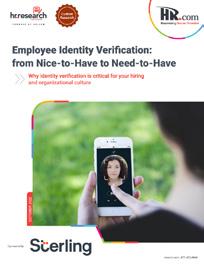
It’s a widely held belief that identity verification is included as part of routine background checks. In fact, in a recent webinar poll of HR professionals, approximately two-thirds of respondents mistakenly believed that a standard background check includes verifying identity.
Why is this such a common misconception? One of the main reasons may be that many Social Security number (SSN) Trace and Form I-9/E-Verify tools and services are often mentioned interchangeably with a standard background check. Let us debunk five common misconceptions about how and when identity is verified, while also detailing the differences between these commonly confused services.
Despite this common myth, an SSN Trace does not actually verify identity. Instead, an SSN Trace is a locator tool for discovering an individual’s address history and alias names. It traces public records connected to a Social Security number and the possible names the SSN could be associated with.
For example, while a candidate may report living at just one address over the past five years, an SSN Trace using the provided SSN could disclose
that they temporarily resided with a relative in a different city for a short time, revealing yet another location where potential criminal records may be found.
By itself, an SSN Trace is insufficient to reveal if a given SSN actually belongs to the candidate claiming it; the trace can not confirm or verify that the candidate is really the person they claim to be.
Unfortunately, this is untrue as a Consent-Based Social Security Number Verification (CBSV) cannot confirm whether or not a candidate actually owns their provided SSN. A CBSV does check the name and SSN provided by the candidate against Social Security Administration (SSA) records, and this confirms that the candidate is not using a deceased person’s SSN via the SSA’s Death Master File, and that the SSN and the date of birth belong to the name submitted.
However, a CBSV does NOT confirm that the SSN belongs to the candidate — they might instead be fraudulently using the SSN of another living person. Additionally, a CBSV requires consent to verify and must also be processed manually, making it a more expensive and time-consuming search with increased candidate friction.
At the most basic level, identity verification assesses whether the candidate is truthfully representing themselves. Unfortunately, for many organizations, I-9 and E-Verify checks are the only form of identity verification that takes place. Since an I-9 Form is not typically filled out until much later in the onboarding process, any information gained arrives too late to be valuable to HR teams.
To do this, HR teams must first gain accurate upfront information about exactly who their candidates are. A standard background check in the U.S. is dependent on candidates providing accurate identifying information at the beginning of the process, such as their Social Security number, name, and date of birth. Errors, whether they are accidental or intentional, can potentially go undetected and lead to incorrect background check results.
Making matters worse, during the I-9 process, it is unlikely that the viewed identity document is crosschecked against the identity information from the background check. We have also heard about several instances where the person going through the interview process is not the same person, who shows up on the first day of the job.
However, this is not discovered until much later. Among organizations that experienced identity fraud, 23% revealed that the person who showed up for the job was not the person whose background was checked. Further, the person checking the ID and completing the I-9 Form is typically an HR professional, who likely is not trained to check an identity document for authenticity.
Over 60% of HR professionals expect the number of remote employees to increase in some form over the next two years. While this presents new opportunities for finding the best talent for your organization, hiring remotely comes with additional challenges in verifying a candidate’s identity. That is why, to successfully verify their identity, it is beneficial to give candidates multiple methods to verify their identity. Some examples of how to verify identity include:
1.
Identity verification, prior to employment screening, is both common and required in many developed countries, and for good reason. Employers and organizations can better help to protect their workers, customers, and clients by discovering any meaningful criminal history on the part of their candidates.
Similar to multi-factor authentication, in which a text message containing a unique code is sent to a user’s cell phone, this process uses the SIM found in a candidate’s cell phone to verify the cell phone holder’s identity, location, account tenure, and fraud history.
A candidate takes a photo of their governmentissued ID, along with a selfie, and submits both for verification. The document’s authenticity is checked and then compared to the selfie to determine a match.
For individuals, who may require additional assistance or who are unable to verify using other methods, live video chat is a great tool as a failover. During this process, individuals would complete identity proofing with a trained, trusted referee via video conferencing.
What if candidates only needed to complete identity verification once, and then keep that verification on file for future use? Sterling’s partner ID.me allows individuals to verify their identity just once and then securely store it in a digital wallet for reuse with other organizations including governments and businesses.


While an SSN Trace is an important locator tool, and CBSV can show that a specific name and an SSN are associated, identity verification is a more comprehensive method to vet a candidate more thoroughly.
Since standard U.S. background checks do not verify identity, many U.S. companies are now
adopting modern digital solutions to quickly verify identity and capture biographic data from government-issued documents. According to a recent survey, 66% of North American companies plan to use identity verification in screening.
SSN Trace and CBSV are all valuable tools when used for their intended purposes in the background screening process, but they do not verify identity. Incorporating an identity verification step early in your hiring process before Form I-9 — such as Sterling Identity Verification — allows you to conduct a more accurate search with the correct identity information, and protect against rising identity fraud.
Sterling is not a law firm. This publication is for informational purposes only and nothing contained in it should be construed as legal advice. We expressly disclaim any warranty or responsibility for damages arising out of this information. We encourage you to consult with legal counsel regarding your specific needs. We do not undertake any duty to update previously posted materials. Taylor Liggett is the General Manager of Sterling Identity, where he leads Sterling’s global identity services business. With more than a decade of domestic and international experience in background screening, identity, and biometrics, he brings a unique perspective to the emerging and rapidly-evolving identity space. Prior to joining Sterling, Taylor led the global account management operation for ADP’s background screening and I-9 services division. Taylor also serves as a member of the Forbes Business Council.





 By Sasha Ramani, MPOWER Financing
By Sasha Ramani, MPOWER Financing
Recently, Brad Chattergoon announced on Twitter that despite earning his degree in the U.S., he is seeking employment in other locations, such as Canada and Australia. Why isn’t he looking to continue his career in the U.S.? The Harvard, Yale, and Caltech-educated data scientist was not selected in the U.S. H1-B visa lottery, and will take his valuable skills and experience abroad rather than contribute to the American economy.
Brad’s story is common. International students earn about a quarter of all science, technology, engineering,
and mathematics (STEM) degrees issued by American universities, and pursue STEM fields at significantly higher rates than their American counterparts. Even though these graduates are highly coveted by American employers, student visas only allow them to stay in the U.S. for up to three years after graduating.
We should strive to support skilled graduates like Brad by enabling them to stay in the United States, especially when they can meet a critical need or gap in our local economy. An analysis by the National Foundation for American Policy found that the
The U.S. can benefit tremendously by allowing talented immigrants to stay
majority of billion-dollar American firms were founded or co-founded by immigrants or their children and that more than 75% of American unicorns (privately held billion-dollar firms) were either founded by an immigrant or currently have an immigrant in a key leadership role.
This includes the founders and leaders of famous U.S. tech companies, such as Sundar Pichai (CEO of Alphabet, Google’s parent company), Elon Musk (CEO of Tesla and SpaceX), and Satya Nadella (CEO of Microsoft), who combined their ambition and skills to create and lead successful companies.
In our current labor shortage, reforming immigration is vital to overcoming supply shortages in several sectors and in mitigating inflation. Though the U.S. labor shortage has touched and affected every industry, technology fields have been hit particularly hard. This trend was exacerbated by the effects of the Covid-19 pandemic, which further limited American firms’ access to skilled foreign workers.
The United States has the opportunity to learn from other countries that have considered more flexible paths to success for talented data scientists like Brad. The United Kingdom offers a High Potential Individual visa stream that allows graduates from the top 50 non-British universities worldwide to stay and work in the United Kingdom, and Canada’s Express Entry allows skilled professionals to receive an invitation to apply for Canadian permanent residence.
In the United Arab Emirates, a Golden Visa enables graduates of the world’s top 100 universities to apply for a long-term (up to 10 years) visa, while Taiwan offers a Gold Card program designed to attract experts in key fields (including science and technology) and Singapore recently launched a similar Overseas Networks and Expertise pass.
In each of these programs, the candidate has the option to renew their visa or apply for permanent residence immediately, thereafter.
With so many other countries trying to attract the Brads of the world, the U.S. will fundamentally be unable to attract and retain global talent without
immigration reform. The United States should work to celebrate, retain, and attract skilled graduates of our universities, like Brad, enabling their talents, abilities, and skills to be integrated into our economy.
To start, the U.S. should increase immigration streams, visa quotas, and visa lengths for skilled workers and graduates of American universities— especially those with high-demand STEM skills. This would give American tech giants and other key industries the access and ability to hire the brightest minds from around the world.
Employers do not have to scour the world to find its brightest minds - over a million of them are currently on American college and university campuses. To create a more seamless path from graduate programs to U.S. employment, Congress should extend the duration of Optional Practical Training (OPT) and Curricular Practical Training (CPT) for international students, and exempt those with in-demand STEM degrees from Green Card caps and the H1-B lottery.
Removing randomness from deciding who gets to stay in the U.S. would be a substantial improvement and enables more strategic decisions about our economic and immigration policies.
These crucial changes to our immigration system would be exponentially beneficial to the United States, and would position us to mitigate gaps in numerous key industries. We need Brad and his classmates here - so let us find a way to keep them.
Sasha Ramani is the Head of Corporate Strategy for MPOWER Financing. Would you like to comment?

These days, people shop for jobs like how they shop for cars and appliances. And with more than 10 million jobs to choose from in the U.S. alone, it is a buyer’s market out there with a ton of options. This means employers have to be more persuasive than ever when it comes to “selling” their organizations and their jobs.
You already know how we got here: via a perfect storm of forces, including a global pandemic, an aging workforce, and fundamental shifts in people’s priorities and perspectives. The Internet has driven us to this buyer’s market as well. Social media, LinkedIn, employer review sites, and even employers’ own careers sites have all given job seekers an incredible amount of information for making employment decisions. With just a few clicks, people can gather insights into a company’s mission, culture, work environment, people practices, compensation and benefits, and so much more.
All of this has produced more informed job “consumers,” which is a good thing. However, they are a heck of a lot choosier when sizing up potential employers and positions—which is exactly why every employer should seriously consider ‘The 70/30 Principle’.
I came across The 70/30 Principle in a Gallup report. Basically, researchers wanted to know what motivates consumers to stay loyal to a brand. Do they make decisions rationally, utilizing tactics like cost/benefit analysis? Or are feelings, impulses, and even passions part of their process? It is not hard to see how these apply to job seekers and employer brands, right? Why do candidates select one company or one job over another? What inspires loyalty to an employer? Do salary and benefits mean more than emotional connections to work and employers?
Gallup’s researchers found that roughly 70% of consumers’ decisions are based on emotional factors and only 30% are based on rational factors. Two Gallup studies provide some fascinating evidence. In the first study, the paper states, “Gallup scientists wanted to know which factors drove customer engagement for a luxury hotel brand. Were physical attributes, such as the condition of the room and furnishings, most important? Or were emotional attributes, such as feeling welcomed and valued, more important? Ultimately, Gallup found that emotional elements accounted for 65% to 70% of the variance in customer engagement.”
In the second study, researchers examined the brain scans of customers with high brand engagement “and found that when asked about the brand, the emotional centers of their brain (particularly those associated with a passion) were activated.”
I believe The 70/30 Principle is just as valid for job candidates and employees as it is for consumers—a belief supported by a growing body of research.
As a 2022 Entrepreneur article reveals, rational aspects of work like salary still matter to today’s job seekers. “But salary aside, candidates are looking for purpose-driven work,” it states. In other words, the emotional aspects of work (such as feelings and passions) matter too. When it comes to considering a job, the Entrepreneur article says, candidates are now asking questions like, What is this job for? and Why would I do this?
“Employees want to work for an organization they believe in and whose values match their own,” notes Entrepreneur. “They also want assurance that their company will look after their well-being. This includes not only their physical health, but also their emotional, financial, social and career wellness.” Very clearly this is a mix of rational and emotional aspects of work.
The article goes on to say that the emotional and less-purely-rational aspects of work are especially important to people 45 years and younger, and it cites research conducted by Blue Beyond Consulting and HR research firm Future Workplace, who found that 52% of workers “would quit their jobs if their employers’ values did not align with their own.”
A 2022 McKinsey report stated, “It is no longer a surprise that people seek more from their employers than just a paycheck and a safe place to work. A preponderance of evidence suggests that ‘good work’ also means satisfying employees’ psychological needs.” McKinsey’s analysis of the reasons behind record numbers of employees leaving their jobs or quitting the workforce shows “the most important factors were social and psychological, including not feeling valued by their organization or manager or not having a sense of belonging at work.”

The Entrepreneur and McKinsey pieces are just two examples of research supporting the validity of The 70/30 Principle in recruiting and TA. Talent Board’s own research also corroborates the fact that candidates’ feelings about a company play a huge part in their decision to apply for and/or accept a job.
As I mentioned in a previous article, candidates researching employers want three things right up front: 1) an understanding of a company’s values and culture; 2) insight into the employee experience at that company, and 3) a sense of whether they connect with the overall brand. In short, candidates want information that goes way beyond the purely rational (a job description, a company profile, etc.). They want to get a real sense of the environment they will be working in, the people they will be working with, and the organization they will be working for.
Our latest Candidate Experience Benchmark Research found that 48% of North American candidates wanted more information about company values than they were typically getting from potential employers (up 37% from 2021); 29% wanted more information on company culture; and 27% wanted more information about diversity and inclusion initiatives. Yes, these are a mix of the rational and emotional aspects of work, but I think, they clearly shine a light on the emotional connection candidates want to their work and their employers.
In general, a few of the most effective tactics successful companies leverage include:
● Showcasing current employees sharing their personal experiences in their own words on videos and in social media posts. Nothing is more authentic to job seekers than hearing current employees tell their stories.
● Giving feedback to job candidates at each stage of their experience. Feedback is sorely lacking in most candidate experiences, yet it is essential to helping people understand why they are moving forward or not in the recruiting process. Beyond providing a measure of closure to unsuccessful candidates, it can also help them do better in their future job-seeking experiences. Our research shows that providing feedback not only builds emotional connections, but also helps boost an employer’s perceived fairness.
● And, finally, being transparent about pay scales and practices is a winning tactic because it hits home both rationally and emotionally. And, like providing feedback, it is something that many companies simply do not do, so it makes a major impression on potential employees.
The 70/30 Principle may have been conceived for consumers, but it is a potent concept that talent acquisition teams everywhere should embrace. Indeed, the wisdom of treating job seekers and employees like customers and consumers has been validated many times over. If you would like to read more about it, check out the KPMG paper, “Candidates as Consumers,” which contains a number of great insights. In addition, it offers some key questions that TA teams can ask themselves to improve the emotional connections they’re building with candidates. These questions include:
● What perception exists—both in the market and internally—about what your company currently offers to prospective employees?
● What unique characteristics distinguish what your organization offers from that of known, and unknown, competitors?
● Are you clearly articulating and marketing these characteristics with a compelling talent brand that attracts targeted talent populations?
● Is your employee value proposition aligned with the employee experience?

Be safe and well.
Kevin W. Grossman is the President of Talent Board and the Candidate Experience Awards. Kevin has over 23 years of domain expertise in the human resource and talent acquisition industry and related technology marketplace. He’s been a prolific industry writer since 2004 and his first business book on career management titled Tech Job Hunt Handbook was released in December 2012 from Apress. His second book titled Candidate Experience: How to Improve Talent Acquisition to Drive Business Performance will be released in 2022 by Kogan Page.
Would you like to comment?
As an employer, it is essential to find value in people and the experiences they have had in their life, both positive and negative. More importantly, hiring teams should be tuned in to how those experiences have shaped candidates’ character and relatability to your customers or clients.

Everyone makes mistakes. It is a natural part of the human experience. Many people learn from those mistakes and make corrections. While some mistakes are more significant, most should not haunt people for their entire lives. Second chances should be considered, even for those who were previously incarcerated.
Nearly 70 million Americans have some type of criminal background. According to a Psychology Today article, nearly 650,000 individuals are released from our nation’s state and federal institutions each year. When prisoners are released, they face several hurdles to economic stability and encounter significant barriers to obtaining and maintaining sustainable employment.
At 26 Motors, we have had a very positive experience with employees who fall under our second-chance initiative. Our efforts in diversity and inclusion, for example, extend to a variety of people who could
not finish school or have a criminal record. What is more critical than their schooling or background is their ability to demonstrate the willingness to reform and turn their lives towards a positive and productive future. We love a good comeback story and feel it is important, as community members, to embrace those who have traveled a harder path.
Our diverse workforce includes at least one person who was previously incarcerated for what is now considered a minor offense. He has completely turned his life around thanks to the second chance given to him. He has been working with 26 Motors for many years, and we are grateful to have him as a part of our team. He is a shining example of what is possible by giving people a chance. Even better, this philosophy is backed by research. According to a recent study, employees with a criminal record have a much longer tenure and are less likely to quit their jobs voluntarily than other workers.
Breaking down the walls and barriers of personal conversation is not easy. From an HR standpoint, we suggest setting the tone before scheduling an interview. Through specialized messaging job descriptions and outreach must be clear with Ban the Box hiring language. Word of mouth has been a huge benefit to our hiring process. When current employees experience first-hand the opportunities available and understand the company’s values and processes, they are likely to share with family and friends positively.
Focusing on qualifications and work ethic instead of analyzing the reasons behind a potential gap in employment is how we recruit and how other
employers could boost talent acquisition in addition to employee retention. Conduct each interview with a mindset of does this person show a willingness to do what it takes to succeed. Like any business, we are looking for hard-working people, who have an interest in our industry: cars, which should be the most important thing to look for.

This collaboration of various perspectives and life experiences offers teams insights that allow them to better serve their customers and their community, which is extremely important to any workforce structure.
Would you like to comment?
Yosef Ayzencot, Co-Founder of 26 Motors, oversees accounting and staff management.Show that management values the importance of the HR function, and has a commitment to development and improvement of HR staff.
Ensure that each person in your HR department has a standard and consistent understanding of policies, procedures, and regulations.
Place your HR team in a certification program as a rewarding team building achievement.
Certified HR professionals help companies avoid risk by understanding compliance, laws, and regulations to properly manage your workforce.
HR Professionals lead employee engagement and development programs saving the company money through lower turnover and greater productivity and engagement.
A skilled HR professional can track important KPIs for the organization to make a major impact on strategic decisions and objectives, including: succession planning, staffing, and forecasting.
1 Less expensive than a masters or PhD program, and very manageable to prepare with flexible study options. 2. Recertification - ensures HR professionals continue to be up to speed on the latest legislation and best practices 3. Recognized, Industry benchmark, held by 500,000+ HR Professionals We offer group rates for teams of 5+ or more for our regularly scheduled PHR/SPHR/ SHRM or aPHR courses.
For groups of 12+, we can design a more customized experience that meets your organization’s needs. You can have scheduling flexibility in terms of the days, times, and overall length of the course.
Groups rates for HRCI exams are also available as an add-on.
All group purchases come with 1 year of HR Prime membership for each attendee to gain the tools and updates needed to stay informed and compliant.

The hybrid work environment is here to stay. A 2021 research report from Accenture, The Future of Work: A Hybrid Work Model, showed that 63% of high-growth companies have already adopted a “productivity anywhere” workforce model and that 83% of workers prefer a hybrid work model.
Today, managers compete for talent in an unstable and increasingly mobile job market. Smart managers
know that their job does not end when a top performer accepts an offer and schedules a start date. Retaining great employees for years requires a plan.
Here are some tips that will help you hire and retain talent in today’s hybrid work environment and prevent your organization from becoming a “revolving door”, where talent comes in and all-too-soon leaves for one of your competitors.
Just as salespeople need to keep their revenue pipeline full, you want to keep your talent pipeline full. We recommend that managers should spend at least 10% of their time recruiting. Connect on LinkedIn with former colleagues, college classmates and other business associates in your network of relationships. Let them know the type of talent your company needs, and do not be afraid to ask for referrals. Also, invite employees to refer to their talented friends and associates. Remember: A-list players want to be surrounded by A-list team members.

Top-performing workers will appreciate receiving details about your company’s hiring process in advance, so they will know what to expect. Let them know that they will be given some real-world scenarios and asked how they would handle a job-related problem. There are not many things in life more stressful than a job interview, and you do
not want your best candidates to feel blindsided or tricked. If your company gives a psychometric test, share the results with the candidate. If you go over and above what happens in your process, candidates will be more likely to tell others about the great experience that they had with your company – even if they do not get the position.
Managers and candidates alike can benefit from the flexibility of asynchronous video interviews as part of the hiring process. Here is how it might work: Send top applicants some questions and ask them to record their answers. Candidates feel more prepared and can make the recordings on their own time. Managers can email the links of the recordings to the hiring team members to watch according to their own schedules.
Those who score the highest can be invited for an in-person or Zoom-style interview with the team. A win-win for everyone!
Congratulations! You hired a winner. Now, share your company’s comprehensive onboarding process with the person, so they will know exactly what to expect and when during the critical first months on the job. Let them know exactly what the key dates, the performance benchmarks, and the available resources are.
Map everything out for them. Give them a calendar that shows them exactly what is happening, what is expected, and when it is expected. If new hires feel marooned by the boss and co-workers soon after joining the company, they will not take on the mission to imbibe the orientation, the knowledge, and the shared behaviors they need to become productive team members.
Making the onboarding process crystal clear before it begins gives them a reason to stick around!
This rule spotlights the two critical timelines managers want to bear in mind with any and every new hire.
During their first 20 days on the job, you want to impact their progress by:
● Immersing them in the culture.
● Selecting and assigning a mentor who will have regularly scheduled real-time discussions with them, introduce them to key people, and offer ongoing support. (Zoom calls are great for this)
● Creating a clear “playbook” for their position that documents essential best practices.
During their next 90 days on the job, you want to imprint their growth by:
● Developing a strategic growth plan that fits them like a glove – and empowers them to execute their personal behavioral plan, which should be based on the playbook.
● Reviewing and tweaking their weekly playbook as necessary.
● Involving them in meetings, helping them to both prepare and debrief.
All five of these tips can easily be implemented in remote, in-person, or hybrid work settings. Make them part of how your organization does business, and you will hold on to more talented contributors!
Bill Bartlett, EVP of Franchise, Sandler, is a critically acclaimed coach and facilitator, who excels at identifying core challenges and implementing growth strategies that are transformative in their depth. Would you like to comment?




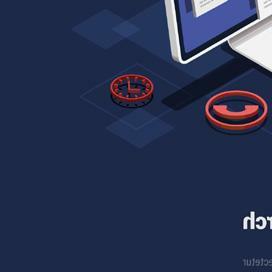

 By Laith Masarweh, Assistantly
By Laith Masarweh, Assistantly
Nowmore than ever, outsourcing administrative tasks in the name of focusing on larger and more complex projects has become a go-to HR tactic. It reduces strain and stress levels for staff and ultimately keeps the machine of business running smoothly. Hiring virtual assistants (VAs) for this kind of work is a great way to maximize productivity, while maintaining your bottom line.
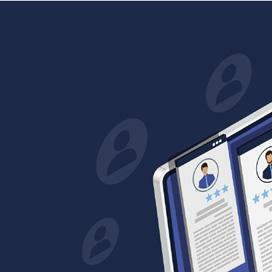
Virtual assistants are remote workers that companies hire to fill workforce gaps or help out with various tasks. They can be hired for anywhere from 10 hours a week to full-time. VAs work fully remote, but match the hours they work with the time zone of their client, and finding the right VA not only provides relief for overworked staff, but can also quickly become an invaluable part of your team.
As you know well, hiring someone new to take the workload off is not always an easy task, and if you have never hired or worked with a virtual assistant before, it may feel daunting to begin searching for the

Here is a quick primer on the dos and don’ts of hiring VAs – and what you need to know when working with a staffing company during your search.
As with every other hire, it is not a race but a marathon. Whether you choose to post a job ad independently or work with a staffing agency, be sure you are mindfully considering every applicant instead of panic-hiring the first person who seems remotely qualified.
While it might seem frustrating at the moment not to be able to bring on the help you need ASAP, it will be far better in the long run to find the right candidate. Working with an experienced VA staffing agency can take a lot of the guesswork out of this process, which brings us to…
While you could post a job ad for a virtual assistant on job boards or your company website, there is a whole host of benefits to be enjoyed by working with a virtual assistant staffing company instead of going at it alone.
When you work with a VA staffing company, some of the work has already been done for you; good agencies will have already completed the chores of interviewing, researching and vetting the VAs they endorse, ensuring you have only quality candidates to choose from. Staffing companies also pay their VAs, so you won’t have to keep track of multiple invoices for all your VAs – just one for the staffing company.
That said, not all staffing agencies are alike, and it is important to vet your staffing company just as rigorously as you would vet VA candidates. Keep an eye out for these red flags when interviewing VA staffing agencies:
● Low VA compensation rates



● Lack of oversight
● Absence of agency support for VAs
● Obscure and non-transparent candidate vetting processes
That last point is especially important, as many VA staffing agencies will purport to have “only the best” virtual assistants working for them. Suppose there is transparency around how they interview and select candidates. In that case, you can be more easily assured that you are actually working with the best, rather than just falling prey to marketing buzzwords.
HR professionals are in the people business – and who does not always want to see the best in others? It is all too easy to see the potential in someone and assume that a position could unlock someone’s hidden potential. Unfortunately, this mindset will be detrimental to your hiring process.
You are hiring VAs to support your business and take things off your plate, and working with someone ill-suited to giving you that support is a headache you and your department do not need.
When working with a VA staffing company, you are not just benefitting from the support of the top VAs in your industry; you are also benefiting from the support from the VA staffing company you are working with. If you find your VA is not a good match or if you need to bring someone else on board to help with shortor long-term projects, your agency should be your first call.
The agency you work with should be well-equipped to answer logistical questions, adjust your scheduling and staffing needs, and collaborate with you to best address the needs of your organization. Remember: the goal of hiring virtual assistants is to ensure your

organization reaches its full potential, and your VA staffing agency should be invested in helping you hit that goal.

Right now, more companies than ever before are tapping VAs to offset the workload of existing employees – particularly as layoffs rise. If you feel as though your company’s workload is beginning to reach critical mass, do not wait; get a VA staffing agency onboard and begin searching for VAs with the skills that can support your company’s needs.
Hiring virtual assistants is the smart organizational support move of the future. Whether your organization or department is strapped for time, or there is a huge project looming on the horizon that needs more attention than your current staff can give, hiring virtual assistants can give you the chance to catch up, take a breath, and enjoy work again.

Checking for bias or negative signals in your social, branding, marketing and on website is key
By Joanne Lockwood, SEE Change HappenHere in the UK, we are still hearing about talent shortages in the NHS and in the travel, delivery, and hospitality industries to name a few, yet we are still not being smart about tapping into the underrepresented and marginalized communities
that have all the skills to plug the gap.
Take the technology sector. We are facing a huge skills gap in tech talent from programmers and engineers to sales, marketing and recruiters, yet women,
people with disabilities and the black communities are not being encouraged through their schools, colleges and universities to look at tech opportunities, nor are they being snapped up by future employers and trained.
Instead, businesses are saying, ‘it’s difficult to find the right candidates’, rather than being proactive and creating their own pipelines. Rather than looking at our recruitment marketing and asking ourselves, ‘why are we not attracting these candidates’ and seeking them out, many organizations are sitting back and hoping for a miracle.
By building a talent pipeline of people, who may have been marginalized and discouraged previously, and training them and paying them equally, organizations may just plug the gaps with people, who are highly emotionally intelligent, driven and creative and who typically have personal attributes beyond pure technical skill.

Let’s also be clear that those from marginalized or underrepresented communities do not only have to be sought in the early stages of their careers, but also at any point in their working years.
How else can we find this talent? Your competitors may well be sourcing potential candidates via social media, including TikTok, YouTube, Facebook, and Instagram. Checking for bias or negative signals in your social, branding, marketing and on website is key. Next, set targets, gather data, track your goals, and adjust if needed.
Show potential candidates that they will be included and valued and there is a clear career path for
them. If these candidates are truly trickier to reach, then you need to try harder and smarter.

Joanne Lockwood, (she/her), is the Founder and CEO of SEE Change Happen, and a Diversity & Inclusion Specialist, who also promotes transgender awareness in organizations.
Would you like to comment?
HR.com prepares HR leaders to be strategic business leaders by curating and delivering best-in-class products and services so you don’t have to waste time seeking out content on your own. We leverage technology and experience to provide you with customized solutions to best meet your professional development needs at every stage of your career.
From on-demand to cohort-based offerings, below is a listing of virtual courses that will challenge and empower you by giving you the tools to drive innovation and success in your organization.
This program focuses on recruiting and hiring and the candidate experience. This comprehensive program is based on 10 years of recruiting and hiring benchmark research.
Optimize and leverage your brand to attract the right talent! Learn how to understand and present the whole picture of your employer brand with this on demand course.
Introductory-level course: learn about the process of selecting the best candidate from a large, diverse pool of high-quality applicants.
Introduction to Human Resource Management Human Resource Management Course includes understanding the vital tasks of recruiting, screening, interviewing, training, appraising, disciplining, rewarding, and developing the employee—both for business and non-profit enterprises.
Gain access to more expert-led courses.
Would you like to comment?
At HR.com, we are committed to educating and inspiring HR professionals and helping them build meaningful and impactful careers. With products and resources rooted in education, research, and leveraging cutting-edge technology, we help at every career stage - and over 1.92 million HR pros agree! (How could that many people be wrong?) By delivering best-in-class learning products, 250+ annual webcasts and 30+ world-class events, and innovative and thought-provoking research through the HR Research Institute, HR.com strives to inspire and strengthen workforces to change the world. HR.com also offers the most comprehensive HR certification exam preparation and guarantees a passing score on all SHRM and HRCI certification exams. Technology and experience drive our customized solutions that will help you become the best and most successful version of yourself.

Circa provides OFCCP compliance management and recruiting technology solutions to deliver qualified candidates on a level, equitable playing field for organizations.

SkillSurvey’s talent intelligence platform provides actionable insights and optimizes talent decisions with feedback across the entire employee lifecycle.
Art of Mentoring combines evidence-based mentoring expertise with the latest technological innovations to enable organisations to develop impactful, cost-effective mentoring programs.



Harrison Assessments uses predictive analytics to help organizations hire, develop, lead and engage talent.
At Jobvite, our mission is to empower organizations to hire and retain the talent they need to succeed. Our goal is to deliver the world’s most innovative and essential talent acquisition solutions.
 LEARN MORE
LEARN MORE
LEARN MORE
LEARN MORE
LEARN MORE
LEARN MORE
LEARN MORE
LEARN MORE
LEARN MORE
LEARN MORE
pymetrics is a talent matching platform leveraging soft skills data & ethical AI to accurately and fairly match talent to jobs at scale.
Sterling, a leading provider of background and identity services, helps 47k+ global clients create people-first cultures and hire with confidence.
hireEZ (formerly Hiretual) is an AI-powered outbound recruitment platform. With hireEZ, you can execute a strategically scalable approach to build your workforce of the future.

